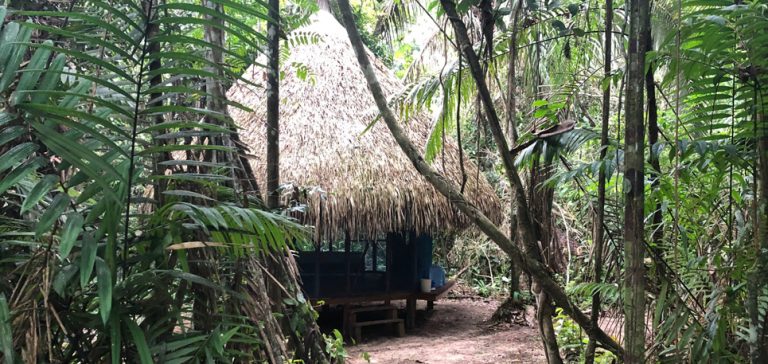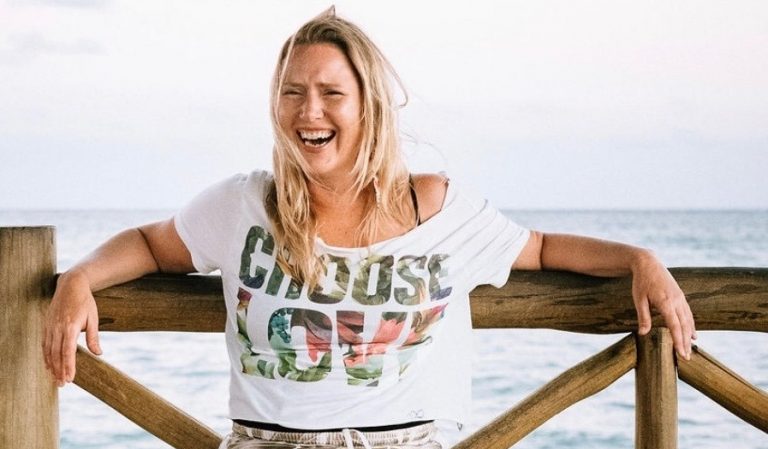When I visited Soltara
In January 2023, I had the opportunity to visit Soltara for the first time. In this article, I want to share with you about my experience so that you can decide if it’s the right place for you.
I had been intrigued about Soltara for several years. I noticed their booth at the World Ayahuasca Conference in 2019 in Girona, Spain, displaying beautiful photos of their retreat center overlooking the ocean. I also knew that they had big names speaking out positively on their behalf such as Dr. Gabor Mate, Dr. Dennis McKenna, the bodybuilder Dorian Yates and media personality Brian Rosa. And of course the fact that they are located in Costa Rica, not far from where I live, also attracted me.
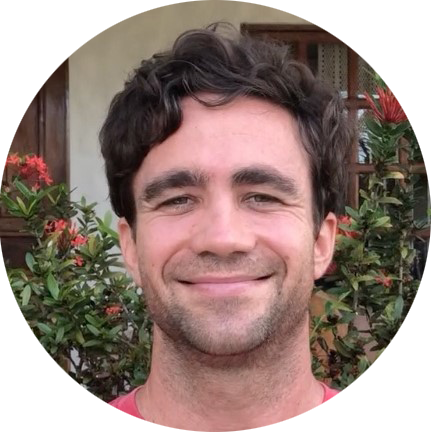
Dave Grillot
Co-founder of TYPM
Finally at the beginning of this year, I had the opportunity to attend one of their five day retreats at their Playa Blanca location near Paquera, Costa Rica.
As I started going through the intake process prior to the retreat, from the first moment I started to get a really good feeling. The way the emails were communicated, the level of professionalism and care every step of the way, and then an enjoyable and deeply informative call with one of their staff members to make sure the experience was the right fit for me, all contributed to my feeling that I was in really good hands. The lady I spoke to, Carolina, patiently took time to get to know me, and to explain to me all about the history and culture of the Shipibo culture, which I was curious about. She was vastly experienced and gave me some personal recommendations that I was able to take with me going forward on my medicine path.
Finally the event was upon me, and I united with the group on a hot sunny day at the Puntarenas ferry terminal, and I was greeted by one of the groups’ hosts, “Angelica” , who instantly put me at ease with her giant smile and her gentle, friendly nature.
Within ten minutes, I had met a handful of people or so from our group of about thirty, and I was engaged in interesting conversations with kind people from all around the US, Canada and Australia. I don’t know how they do their advertising, but Soltara somehow attracted a group of deeply kind-hearted people with a genuine interest in improving their well-being, relationships, and ability to be of service in the world.
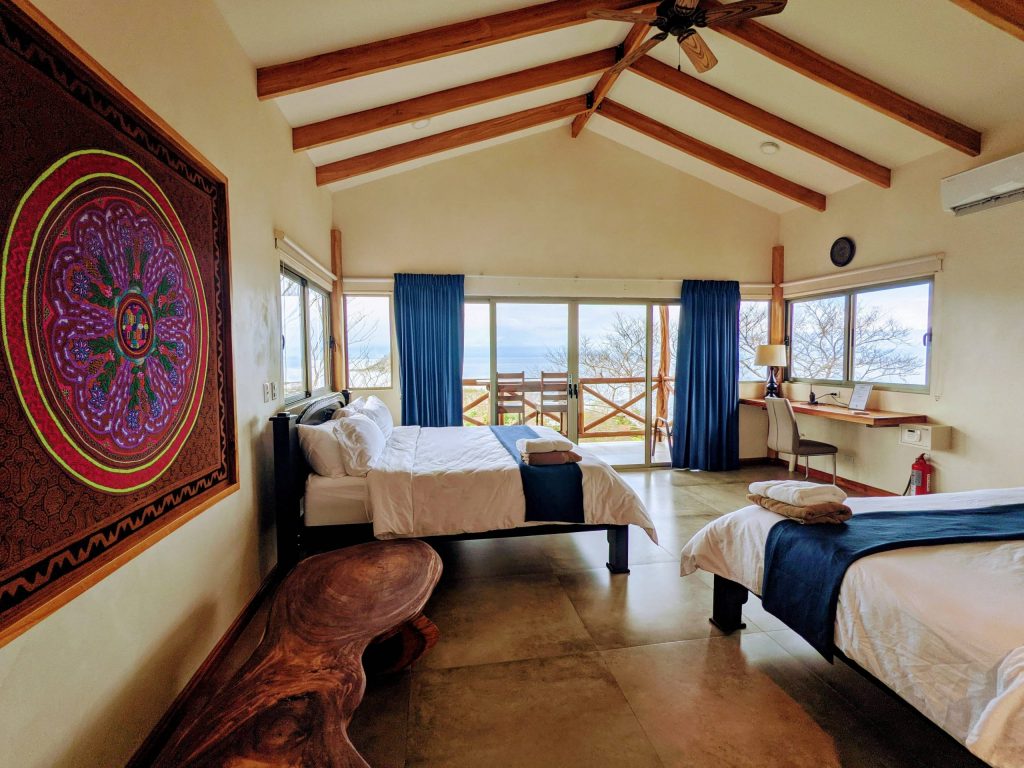
A view of a bedroom at Soltara (Playa Blanca location).
After a delightful ride, I was feeling excitement and suspense about the experience, and we arrived at Playa Blanca and to the Soltara property. It was upon a hill, the weather was sunny, hot and dry, but as we walked under the shade of the tall trees, I thought “Wow this is a spectacular place.” I was shown to my room and it exceeded any expectations I had formulated. I had a third floor suite with a king sized bed and a view through the trees to the ocean, with a balcony, and living room with a coffee table and comfortable couch, and an ample bathroom and walk in closet. Everything was tastefully decorated, esthetically beautiful with ecological sensitivity, and engineered for ease and comfort.
I noticed that in my room I had a walkie talkie that could be used in case I needed some kind of help in the middle of the night after a ceremony. This was one of many little thoughtful details I noticed throughout my stay that showed me that Soltara wanted to do everything possible to make my experience safe and comfortable.
We were given a tour of the facilities and then we convened in the maloca (the ceremony space) for the first of many orientation talks that we would have throughout the retreat. That’s when I got a chance to start getting to know the other facilitators that would be leading the retreat. Note: the ceremonies themselves are led by Shipibo medicine men and women, indigenous people from Peru who speak only Shipibo and Spanish, and they are assisted in the ceremonies by the english speaking facilitators, who provide translations and support to anyone who needs help. And then during the rest of the retreat, these facilitators are present throughout the various activities, providing information, support, leading activities, and basically running the programming.
They sing “icaros”, which more than songs, seem to be a sort of vibrational technology that works inside of you to sort out any blockages or areas of dense energy.
Within the facilitator team, (let’s call them Ali, Sara, Michelle and Louise), each of them had over ten years experience assisting in Shipibo style ceremonies, and a couple of them had over twenty years experience– I found this remarkable. They were extremely gentle, kind, thoughtful, and, as was revealed in the following days, they knew exactly what to do to skillfully accompany us through the vulnerability of working with ayahuasca. I soon felt completely at ease with them.
One thing that was exemplary about them was their way of communicating. Anytime they gave us a suggestion, or requested something of us, they always explained why. That allowed me to feel really connected with them, and gave me clarity. They soon felt like friends that I could trust.
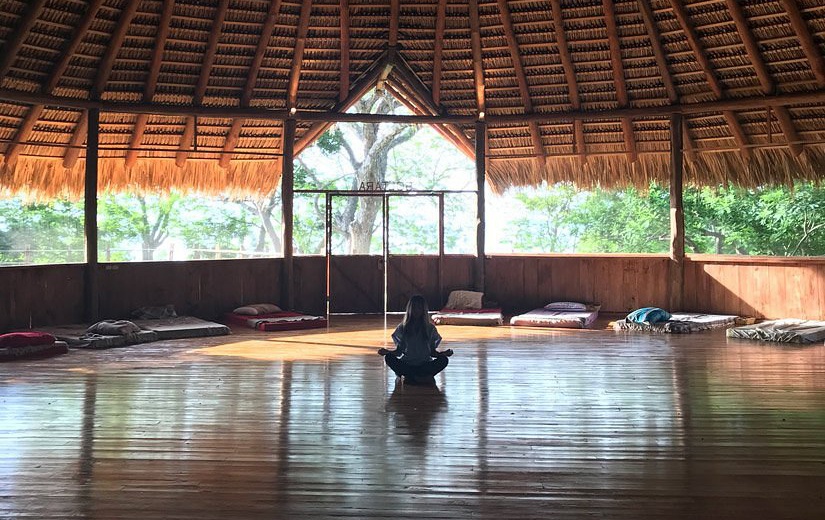
The maloca is the ceremony space where the ayahuasca ceremonies are held, led by the Shipibo healers
Near the beginning of the experience, we participated in a lemongrass purge ceremony to cleanse ourselves. This was a very interesting experience. I won’t go into too much detail about how it works, but it was quite challenging and forced us to be vulnerable with each other very early on in the retreat, which had a sort of immediate bonding effect on the group.
The ceremonies at Soltara are conducted in the Shipibo way. The Shipibos are a tribe from the Amazon of Peru and Brazil. There is also a book I love called the Fellowship of the River that talks about them. I have heard them referred to as the “surgeons” of ayahuasca.
To give you a brief introduction into how their ceremonies work (from my humble perspective): they drink the ayahuasca along with you, and then they rotate around the room, singing in front of each person for 10-15 minutes. They sing “icaros”, which more than songs, seem to be a sort of vibrational technology that works inside of you to sort out any blockages or areas of dense energy. They basically see into you, observe your energetic situation, and sing the frequencies that they perceive will help you resolve any issues.
I was a little bit apprehensive going into these Shipibo ceremonies, as this is not the approach I am used to with ayahuasca. I am used to the facilitator using musical instruments, and getting the energies moving in the room with the power of music. I am also used to some of the guests getting the chance to sing songs, which I find to be very healing and cathartic in terms of self expression, both to do yourself and to witness. I personally love singing in ceremonies. So here I was going into ceremonies where no musical instruments would be used, and only the three shamans or maestros would be able to sing. Furthermore, as we had three maestros, I knew they would be rotating around the room at the same time, equidistant from each other, and singing on top of each other. I expected an unpleasant and dissonant cacophony of sounds, causing me a lot of confusion and discomfort.
Each night was different, but for each intention that I had the ceremonies, I felt that I was receiving a specific surgery pertaining to that intention.
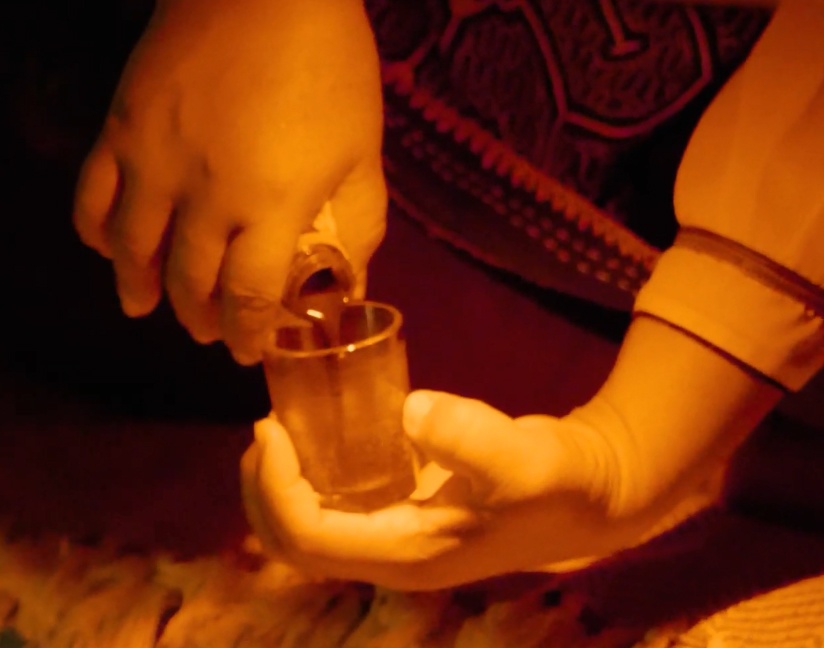
Ayahuasca, an ancient healing brew, is served in ceremonies that take place at night. Shipibo healers sing icaros throughout the ceremony.
My experience with the Shipibo way blew my mind. First of all, the singing, despite being without instruments, was absolutely melodic, musical, and beautiful to listen to. It was some of the most eerie, mysterious, remarkable sounds and tones I had ever heard. Also the three maestros, in this case a man and two women, weaved their songs together in an inexplicable and improvised way, and it did not sound dissonant, but rather they took us on a collective voyage.
When I got the chance to receive my personal songs, it blew my mind and moved me to tears. I felt that I was receiving one of the most precious gifts I had ever received. I felt like I was getting deeply seen and embraced by ancestral beings. Their music stirred things inside of me and my field of view burst into colors and remarkable visions. Profound emotions surfaced. I purged deeply into my bucket and felt dense areas of myself burst apart. Each night was different, but for each intention that I had the ceremonies, I felt that I was receiving a specific surgery pertaining to that intention.
I’d like to share with you one memorable anecdote that confirmed to me that the Shipibos are the real deal. In one of the ceremonies, my intention was to learn to “keep my head up” in my life, both in a physical and metaphorical sense. I had noticed that frequently in my day-to-day life, I would hang my head and get kind of down about different things that were happening to me, and remain in a low-energy victim state, rather sit up straight and consciously do what I can to deal with my present circumstances. I had not mentioned this intention to anyone.
The next day after the ceremony where I had held that intention, I had the opportunity to speak with one of the maestras in Spanish. I asked her what she saw in me the previous night, when she was singing to me. She said “I was helping you straighten your back and bring your head up. I worked on releasing some blockages in your upper neck area. I can see you have experienced a lot of sadness recently” It really surprised me how clearly she saw what I was going through. I had lost a close friend several months prior. I felt tears welling and immense gratitude radiating from my heart.
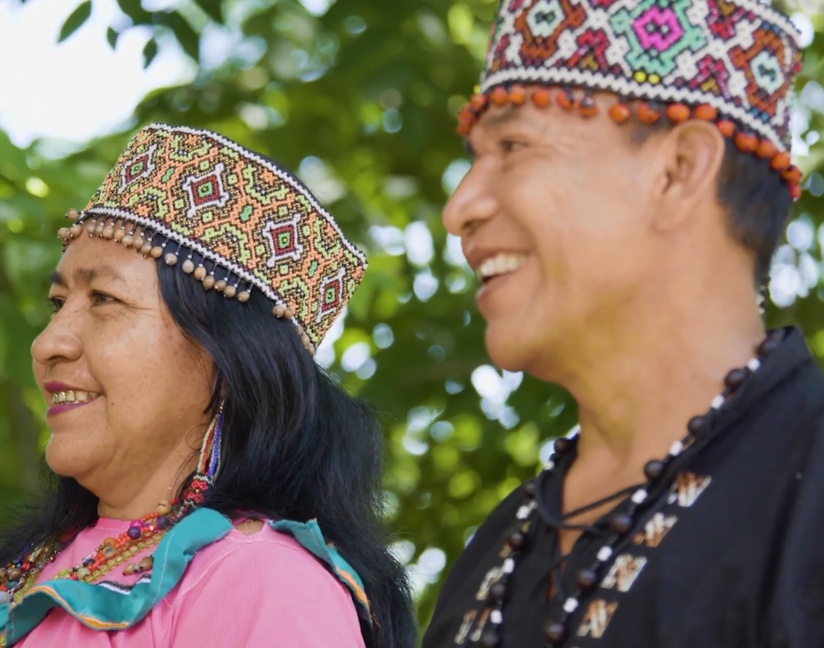
The Indigenous Peruvian Shipibo Healers have decades of experience working with ayahuasca.
Another very special thing worth mentioning about the retreat was the food. Throughout the event, at every meal we would gather in the dining area, and the chef would give us an explanation of the food he and his team had prepared for us, before we would eagerly dig in buffet-style. It was gourmet cuisine, absolutely delicious, creative, full of colors, and interesting textures, made from local seasonal ingredients, all organic and gluten-free. It was generally vegan food with occasional chicken and fish options, always accompanied by interesting juices, and all the food specifically tailored to being compatible and complementary to work with ayahuasca. The food amazed me and I felt so nourished and supported. This aspect of the experience is yet another reason why I felt so comfortable, grateful and “held” throughout the week, allowing me to venture into vulnerable parts of myself and focus on my healing.
The meals were an opportunity to sit down and get to know my fellow participants, and it was beautiful to see how throughout the week, we went from strangers to very close friends, some of them “life-long” friends. As we gazed out towards the ocean, we opened up, shared and learned from each other, and strong bonds were formed because we were united in our genuine desire to become better versions of ourselves.
Throughout the experience, the facilitators were always there, day and night, guiding us, making us feel supported if we needed it, available with a smile for anything we needed, and treating us with immense gentleness, patience and kindness, and also authentically sharing with us their own personal stories.
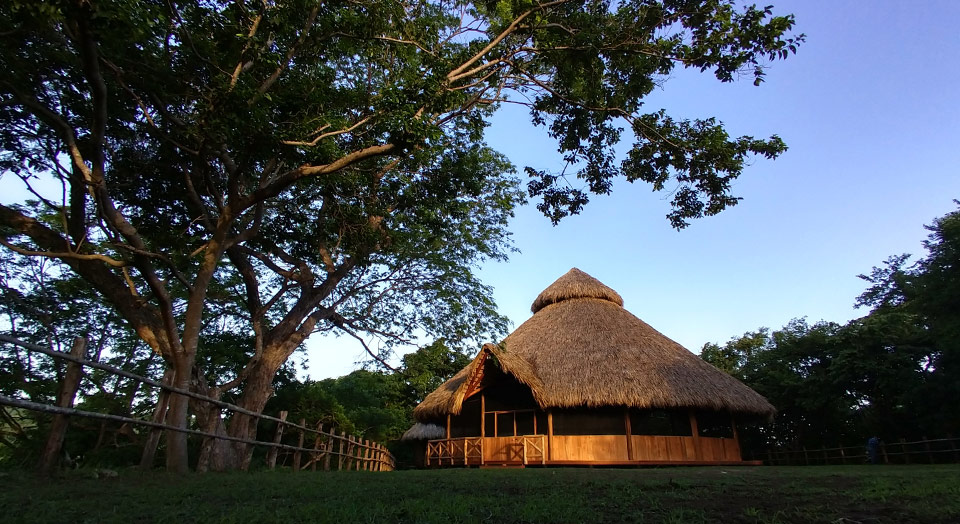
My experience was that Soltara is an organization that approaches its retreats with enormous care, respect, integrity, humility and a loving energy.
We were each given a little workbook to help with the integration process; the book itself was like a treasure, full of beautiful art, interesting introspective prompts and exercises, and space for us to journal and record our thoughts.
I really appreciated how there was a very big emphasis placed on the integration process, reflected in how the retreat was designed, in the way that the facilitators communicated with us, and then in the months following the retreat, we continued receiving regular emails, written very lovingly, with different integration tools and resources to help us smoothly transition back to regular life and apply the lessons that we learned.
The Soltara experience was absolutely magical and if it is within your means to attend, I recommend it with all my heart. From the preliminary communication to the final post-ceremony correspondence, all I felt was deep love and integrity from the Soltara team, and a genuine desire on their part to design and offer the best experience possible for their guests.
I was profoundly grateful for my experience and I knew I wanted to write an article recommending Soltara, and so several weeks after the event, I requested to speak with Melissa Stangl, Chief Operating Officer of Soltara, to ask her some questions and learn more about how the organization was run.
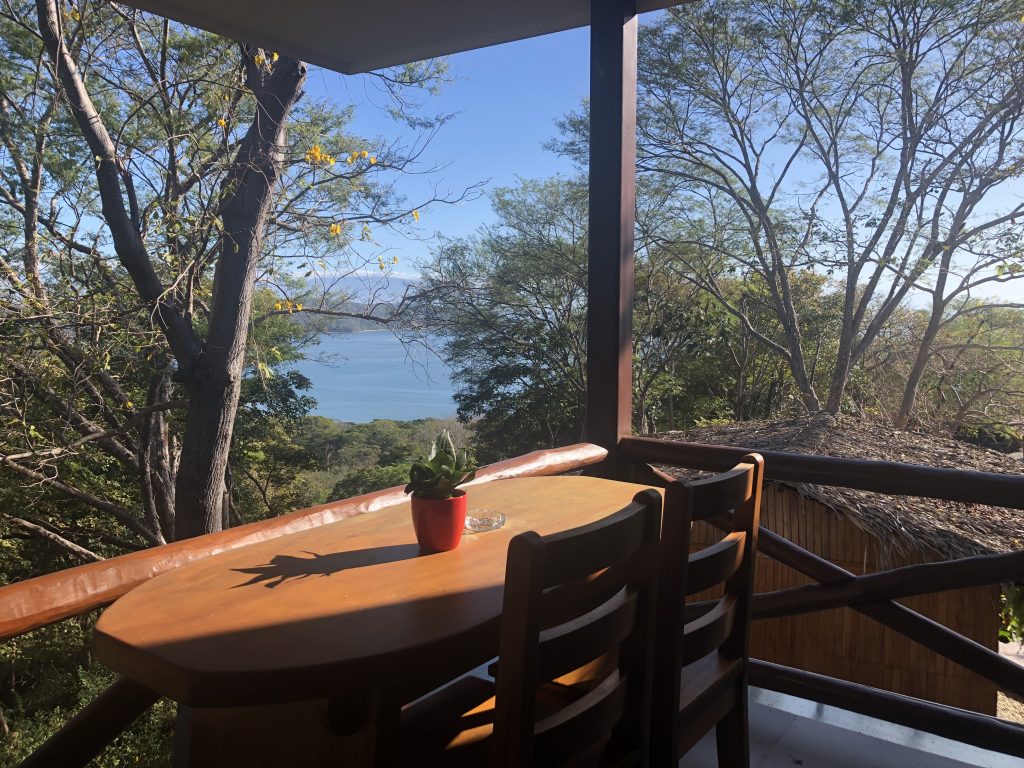
The venue offers many comfortable places to relax and integrate the deep inner work of the experience.
I was curious to ask her about how they do business with the Shipibo healers, given the cultural differences and drastically different economic realities. Also about the selection process for finding these remarkable healers. To me these seemed like tricky, delicate matters, and I was curious to hear about how Soltara approached this, before writing an article whole-heartedly endorsing them.
What I learned is that they select the healers through the word of mouth of trusted friends, and that over time these healers bring in other family members that they recommend. Meanwhile they pay their healers very well, also covering flights and insurance, and that by working a few months per year, the healers are able to cover the expenses of their families for the entire remainder of the year. Soltara is helping the healers pursue social impact projects that are important to them, such as developing a school of Shipibo children, to teach them about Shipibo culture, and that they donate additional funds to initiatives such as these. And basically they are developing win-win relationships with these healers, and many of the groups of healers have continued working with Soltara for several years. (This description was in line with my own impression of the healers that I met: they seemed very grateful and comfortable at Soltara.)
She explained that Soltara strives to be a bridge to the Shipibo culture, introducing numerous Westerners to the beauty, culture and mastery of the subtle realms of the Shipibo.
I continued inquiring with Melissa about the tricky aspects of running a business that connects two different cultures, and I was really touched by her down-to-earth perspective, her earnestness, her awareness of the challenges and the careful approach needed. It was my impression that Soltara as an organization is approaching these matters with enormous care, respect, integrity, humility and a loving energy.
I am still floating down a river of thank you’s when I look back on my experience at Soltara, but that doesn’t mean it’s right for everyone. I sincerely hope that this article gave you some insight into how the retreat is designed, and helped you decide if it feels right for you.
They were extremely gentle, kind, thoughtful, and, as was revealed in the following days, they knew exactly what to do to skillfully accompany us through the vulnerability of working with ayahuasca.
For confidential support during or after a psychedelic experience, please contact our partner Fireside Project by calling or texting.
6-2 FIRESIDE (623-473-7433)
